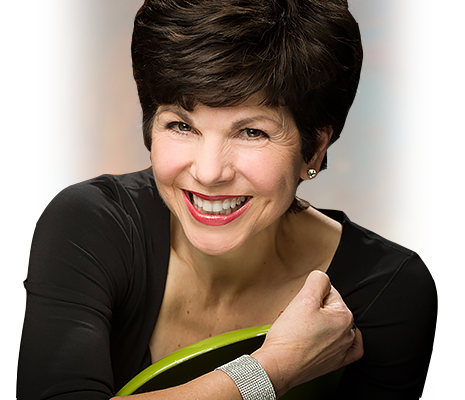
I’m a stickler for having a “speaker intro” as part of your professional tool kit. This tool is not just reserved for celebrities or professional speakers who get paid for speeches. It is an essential marketing tool for professionals who give presentations as part of their job….whether for internal meetings, organizational events, industry conferences, community events, even some social events. You will benefit if someone else introduces you, and does it well.
There’s nothing worse than when the person introducing you at a meeting or conference says, “Our next speaker is _____. She’ll go ahead and introduce herself.” I consider that lazy on behalf of the facilitator, and also a huge missed opportunity on behalf of the speaker/presenter.
The job of the facilitator or meeting host is to introduce the presenter or guest speaker and to help position them for success. If you don’t help the facilitator do that for you, then they are forced to do their own research (or not) and figure out what they should say about you. I have witnessed many live introductions that contain old/outdated information, and/or where speaker’s names and organizational affiliations are mispronounced. That just kills me.
That’s why I am motivated to write this blog and give you guidance on how you can prevent this embarrassing mistake.
Your job when you are the presenter/speaker:
Draft a speaker introduction and send it in advance to the meeting organization. Bring a printed copy with you to the event just in case. Your speaker intro should be:
- one sheet of paper
- 14-16 size font, double line space for readability
- no more than 200 words (less is better)
- phonetic spelling on hard to pronounce words
- page header should clearly indicate “Speaker Introduction for ________________ (your name)”
- include content that is both professional and personal. It’s important to show that you are not only an experienced, credible professional, but also an interesting person to listen to. It’s good to share a bit of your personal brand and your personality.
- Include transitional copy to make it appropriate for the facilitator to read. For example, begin your Speaker Intro with “Our next speaker is_____”, and end your Speaker Intro with “Please join me in welcoming _____.”
- Add some light humor, and an “Oooo” factor (something impressive, unusual, remarkable, a little known fact about you). When I am introduced using my Speaker Intro, and they mention my black belt in the martial art form of TaeKwonDo, there is always a fun response from the audience and a comment from the facilitator (e.g., “So don’t mess with her.”)
 1. Remember that your Speaker Intro is NOT the same thing as your Professional Bio (which is usually presented in printed or online form). Your Speaker Intro is presented verbally by someone else. Therefore, it needs to be a separate document and designed to be read out loud. 2. You can tailor part of your Speaker Intro to the specific event, but more often you’ll find that the core of your Speaker Intro will stay the same. (Example: see how I modified my speaker introduction to align with the upcoming Presidential Election – Speaker Introduction for Kathy McAfee – Oct 2016). 3. If you need help, hire a good copywriter or presentation coaching to help you create your Speaker Intro. I worked with the talented Chris Amorosino to help create my pithy Speaker Intro)
1. Remember that your Speaker Intro is NOT the same thing as your Professional Bio (which is usually presented in printed or online form). Your Speaker Intro is presented verbally by someone else. Therefore, it needs to be a separate document and designed to be read out loud. 2. You can tailor part of your Speaker Intro to the specific event, but more often you’ll find that the core of your Speaker Intro will stay the same. (Example: see how I modified my speaker introduction to align with the upcoming Presidential Election – Speaker Introduction for Kathy McAfee – Oct 2016). 3. If you need help, hire a good copywriter or presentation coaching to help you create your Speaker Intro. I worked with the talented Chris Amorosino to help create my pithy Speaker Intro)
Here’s an EXAMPLE
I had the pleasure of introducing Jill Hummel, President of my healthcare company, Anthem Blue Cross and Blue Shield. Jill was one of the six distinguished keynote speakers, or leading ladies as we referred to them, at the recent 2016 WOW! Forum in Torrington, Connecticut. My role as emcee was to position Jill and the other speakers for success, and to create energy, relevance, and engagement throughout the day. I loved working with Jill Hummel. I found her very open to being more creative with her Speaker Intro. It was fun for me to introduce her. Her presentation that followed was even more engaging and interesting. Even I was taking notes. Speaking of notes, Jill gave me permission to share her Speaker Intro on my blog.
Jill Hummel is a recovering attorney. She is also the President of Anthem Blue Cross and Blue Shield.
In this role she is responsible for managing Anthem’s operations and working with stakeholders across the delivery continuum to drive improvements in health care access, safety, quality, outcomes and affordability.
When Jill is not working to improve the health care system she is on the water. You see, 11 years ago, after being land locked in St. Louis for 25 years, Jill and her husband moved back East and took up sailing.
Though sailing was new to this scrappy girl from Queens who grew up on public transportation, charting her own course was not.
When girls were required to wear dresses to school, she wore pants.
When she was told that only boys have a bar mitzvah, she enrolled in Hebrew school and became a bat mitzvah. (pronounced “Bot Mitzvah”)
That early independent streak and strong belief in gender equality formed the basis of who Jill is today.
Please join me in welcoming the less scrappy but still determined woman from Queens who now proudly calls Connecticut home, Jill Hummel
What to do after you are introduced:
Hearing your speaker intro should make you smile (not bore you), and relax you before you take the floor/stage to deliver your opening remarks.
When the facilitator is introducing you, look at the audience, and not at the facilitator. Why? Because people are looking at you, and this is a great opportunity to start building rapport and making connections with people. Remember to smile, make eye connection,…and breathe!
When you take the stage, shake hands with the facilitator, if appropriate and natural.
When you begin your opening remarks, do NOT say “Thank you ___ (facilitator) for that great introduction.” That’s boring and unnecessary.
Also, do not repeat your name or say this: “As ____ (facilitator’s name) said, my name is _____, and I’m _____(title/company).” This is redundant, annoying, and boring.
After you are introduced, just jump in with your opening remarks. Do not say, “So….” or “Um…” or “Er…” Avoid “palaver” or idle chatter. No need to repeat the morning greeting.
What can you do instead? Get their attention with a compelling opening. Try opening with a personal story, or share a bold fact, or pose a series of questions. Practice your opening in advance, and know well the first words you want to come out of your mouth. Strong strong.
Your job when you are the facilitator or person who will introduce someone:
- Ask the speaker for a copy of their Speaker Introduction. If they don’t have one, ask them to create one (using the criteria above). Otherwise, ask them to send you a copy of their professional biography. Then adapt it into a speaker introduction that you can read to set them up for success.
- Read it outloud and identify the sentences and words that are difficult to pronounce or confusing. Change long complicated sentences to shorter, simple sentences.
- Remove/change acronyms that may confuse the audience
- Ask them to send you phonetic spelling of any words that you have questions about.
- When in doubt, check the YouTube channel – Pronounce This
- Practice verbalizing the introduction several times before the day of the event.
- It’s okay to have the printed Speaker Intro in your hand when you make the introduction, but be sure to look out at the audience several times.
- Have energy in your voice
- Consider annotating the text in “visceral language” so that you can give the introduction in full vocal awareness. I learned how to annotate text from speech coach to the stars, Arthur Samuel Joseph. Check out his online course for Visceral Language and other services.
Position yourself for success with a prepared speaker introduction
![]() Increase the chances of a successful presentation by having your Speaker Introduction at the ready. Why leave to chance an awkward beginning when you can strategically set yourself up for success. Having a clear and compelling Speaker Introduction in your professional tool kit will serve you and your audiences well.
Increase the chances of a successful presentation by having your Speaker Introduction at the ready. Why leave to chance an awkward beginning when you can strategically set yourself up for success. Having a clear and compelling Speaker Introduction in your professional tool kit will serve you and your audiences well.
Want more tips and tools to help you increase your presentation success? Buy my book, Stop Global Boring, and purchase the suite of 12 presentation tools known as The Control Center.

